Agile working is a flexible approach to work that emphasises collaboration, innovation, and adaptability. It involves bringing together a range of resources, including people, processes, connectivity, and technology, to achieve a specific goal or complete a task. The old style of office design was creating workspaces that are equal and the same; forcing people to conform whether it suited them or not. We have since moved on to a more enlightened style of office management that embraces differences and different styles of working – enter agile working.
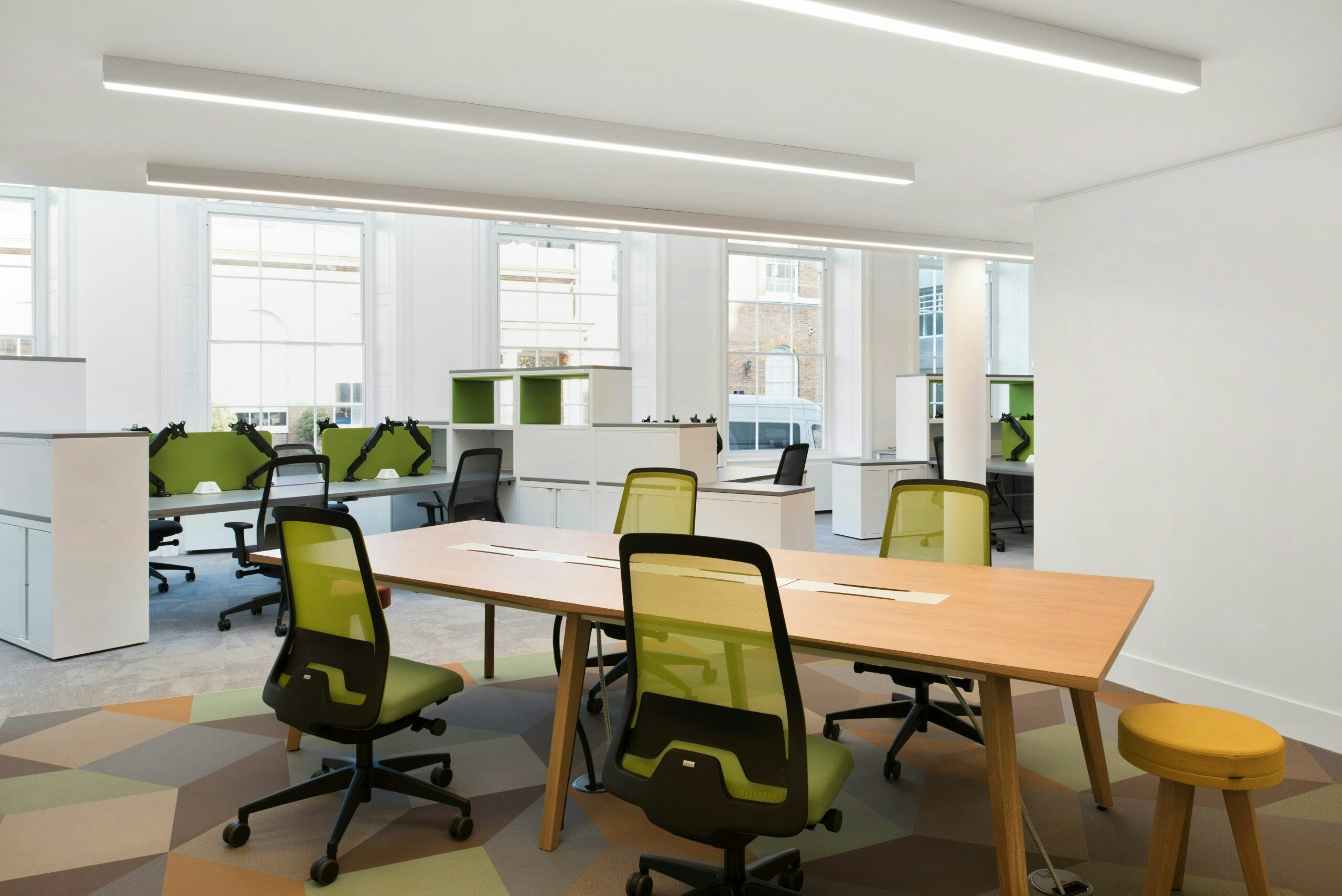
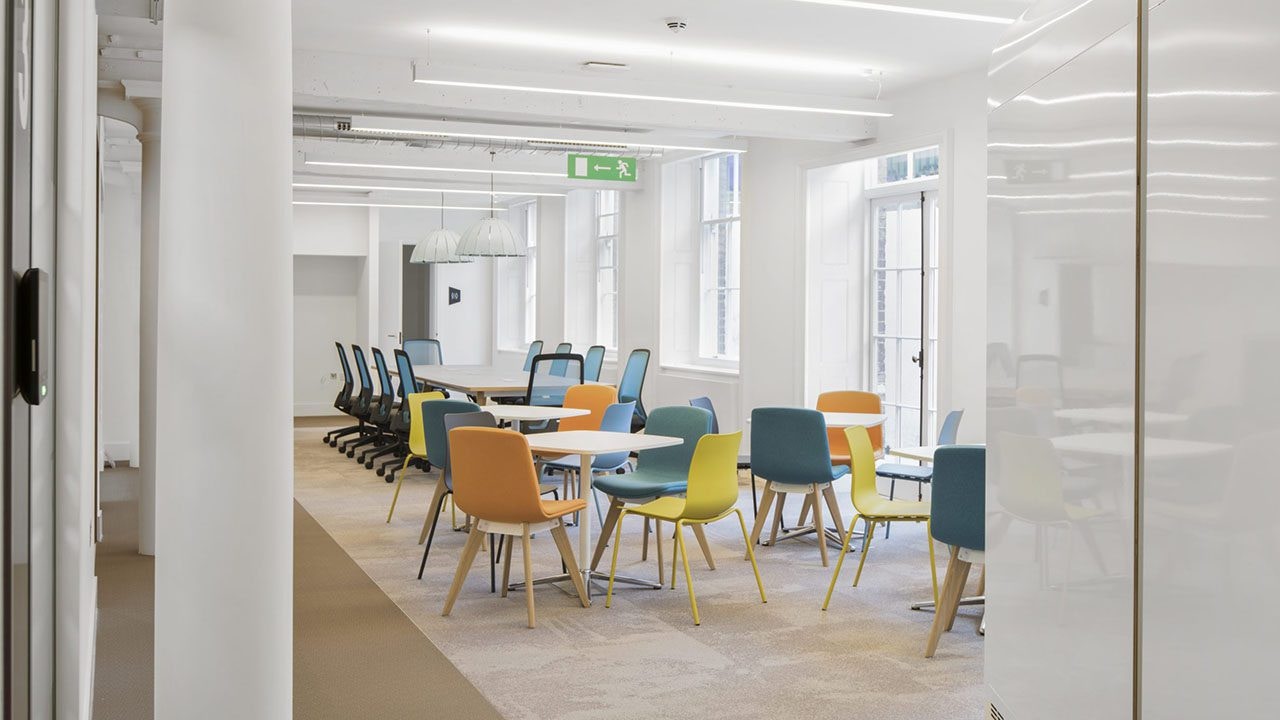
Agile working is an approach to work that provides employees with the freedom and flexibility to work in a way that suits them best. From private offices and collaborative areas to relaxation zones, it allows employees to choose the best environment for their specific tasks. It is essentially a response to the changing nature of work, with employees seeking more autonomy, choice, and flexibility in the workplace.
More than an office buzzword, agile working is a product of an evolving office landscape, which has changed fundamentally over the last 20-30 years. The traditional model of cubicles and private offices (see our article on the history of the office) has given way to more open and collaborative workspaces, with a focus on efficiency and productivity. Agile working has emerged over time along various stages:
1. Open Plan Offices: In the 1980s-1990s, open plan offices became popular as a way to cram in more desks and save space. It was also a way to increase the efficiency of building systems (such as lighting and HVAC) This involved removing walls and partitions between workstations, creating a more open and collaborative workspace. However, it was often criticised for being too noisy and distracting, and not providing enough privacy or personal space for employees.
2. Hot Desking: In the early 2000s, hot desking was introduced as a way to maximise space utilisation and reduce costs. This involved allowing employees to use any available desk or workspace on a first-come, first-served basis. However, this too become criticised for being impersonal and disruptive, as employees had to constantly pack up and move around.
3. Agile Working: it was only in the late 2000s and early 2010s that agile working became popular as a way to allow for more flexibility in the workspace. This involved providing employees with a range of different work settings, such as standing desks, breakout areas, and quiet zones, to suit their individual needs and preferences.
4. Hybrid Working: From agile working within the physical office, the COVID-19 pandemic triggered the shift towards hybrid working, which combines elements of all of the above models, but crucially involves allowing employees to work both from home and from the office (or indeed anywhere), with a greater emphasis on flexibility and adaptability. This has been facilitated by advances in technology such as video conferencing, and cloud computing, faster wireless connectivity (e.g. full fibre), which have made remote working more feasible and effective. One of the key benefits of hybrid working is that it allows a much greater degree of managing office costs in an uncertain world.
This evolution of the office has moved from a desire to maximise “space utilisation” in buildings (office-centric) towards “staff well-being” in buildings (staff-centric) – creating more collaborative, flexible, and efficient workspaces that meet the needs of both employees and employers (i.e. a distinct shift from the emphasis on how to get the best out of buildings to how to get the best out of people). While each of these models has its pros and cons, the move towards hybrid working is likely to remain the new norm for the foreseeable future, as organisations seek to balance the benefits of remote working with the benefits of in-person collaboration and interaction.
This article aims to give companies an (1) overview of how agile working now includes the hybrid model and (2) a broad overview of the design and build implications for an agile workplace.
Why Does Agile Working Matter?
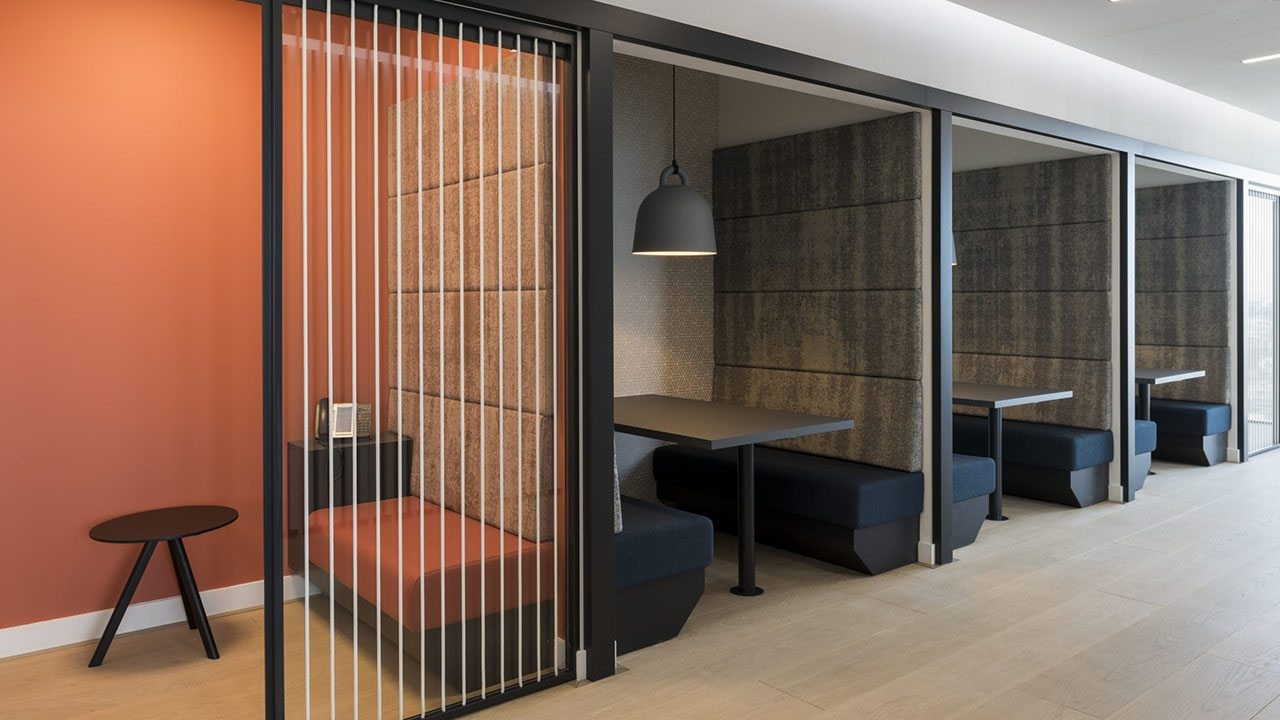
In the last 3 years, we’ve experienced some majour shocks to the world economy (Covid-19, the Ukraine War, and the Cost of Living Crisis). There will no doubt be more in the coming decade, furthering the need for a more flexible and agile approach. The more agile you are as a company, the better position you’ll be in to face the challenges of the future. In short, agile working is centred around creating a more flexible and adaptable working environment that can better support employees, improve overall productivity, and put a company in a good position to adapt to a changing environment. Some of the key reasons why agile working matters:
Adapting to a Changing World:
In a tumultuous world, you want to be as flexible as you can be. Agile working is an approach to work that emphasises flexibility, collaboration, and adaptability. It allows individuals and teams to respond quickly to changing circumstances, shifting priorities, and emerging opportunities. In today’s fast-paced and constantly changing world, agile working has become increasingly important for businesses and organizations that want to stay competitive and relevant. With agile working, teams can quickly adapt to changes in market conditions, customer needs, and emerging technologies. They can respond to new opportunities and challenges more rapidly than traditional, hierarchical organisations, which often have to go through layers of bureaucracy to make decisions.
Improved work-life balance:
One of the biggest benefits of agile working is that it can help employees achieve a better work-life balance. By providing more flexibility in terms of when and where work is done, employees can better manage their personal and professional commitments, leading to a happier and more engaged workforce (see our article on hybrid office design).
Increased productivity:
Agile working practices can also lead to increased productivity. By allowing employees to work in ways that suit their individual needs and preferences, they are better able to focus on their work.
Greater employee satisfaction:
When employees feel empowered to work in ways that suit their needs, they are more likely to be satisfied with their jobs. This, in turn, can lead to lower attrition and lead to better retention of top talent.
Better collaboration:
Agile working practices can create a more collaborative work environment. By providing more opportunities for employees to interact and work together, companies can foster greater teamwork and innovation. That matters because it can lead to a more engaged, productive, and satisfied workforce. By embracing this new approach to work, companies can create a culture of flexibility, collaboration, and innovation that can drive long-term success.
Retention of Top Talent:
Agile working can be a powerful tool for attracting and retaining top talent within a business. The ability to offer a dynamic and engaging environment that breaks up the monotony of traditional desk work is a significant advantage in a competitive job market. By providing a range of workspaces that cater to different needs, such as collaboration corners, breakout spaces, and quiet rooms, businesses can create an environment that fosters creativity and innovation. This can be particularly appealing to ambitious, bright minds who are looking for exciting and stimulating work environments.
Moreover, agile working can help to create a positive company culture, which is essential for attracting and retaining top talent. By providing a workspace that is more than just a desk and computer space, businesses can show their employees that they value their well-being and are committed to creating a positive work environment.
Creativity and Innovation:
The agile working model has a significant impact on innovation and creativity in the workplace. By providing employees with a range of different spaces to work in, they are more likely to be stimulated and inspired by their surroundings. Agile working can also foster collaboration between individuals and teams. When employees are working in different spaces throughout the day, they are more likely to interact with people they may not have otherwise encountered. This can lead to the exchange of ideas and perspectives, which can spark innovative and creative solutions to problems.
Innovation and creativity are essential to the success of any business. By embracing agile working, businesses can create an environment that fosters these qualities, leading to new ideas, products, and services that can keep them ahead of the competition.
Cost savings:
Agile working can also be a cost-effective solution for businesses seeking to maximise their space utilisation. If, for instance, 60% of your office space is taken up by under-utilised desks, adopting an agile workplace approach might help scale this down to say 40% while filling the remaining space with dynamic and interactive areas. These areas could include breakout spaces, social corners, kitchen and dining areas, collaboration corners, and quiet rooms, each tailored to meet specific needs. By adopting this approach, businesses can minimise their carbon footprint by optimising space, tracking occupancy, and using energy-efficient resources like motion-sensor lights that automatically turn off when not in use. Thinking about office design in this manner can help businesses reduce costs while promoting a more sustainable and eco-friendly environment. By reducing the need for physical office space and allowing employees to work remotely, companies can reduce their real estate costs and improve their bottom line.
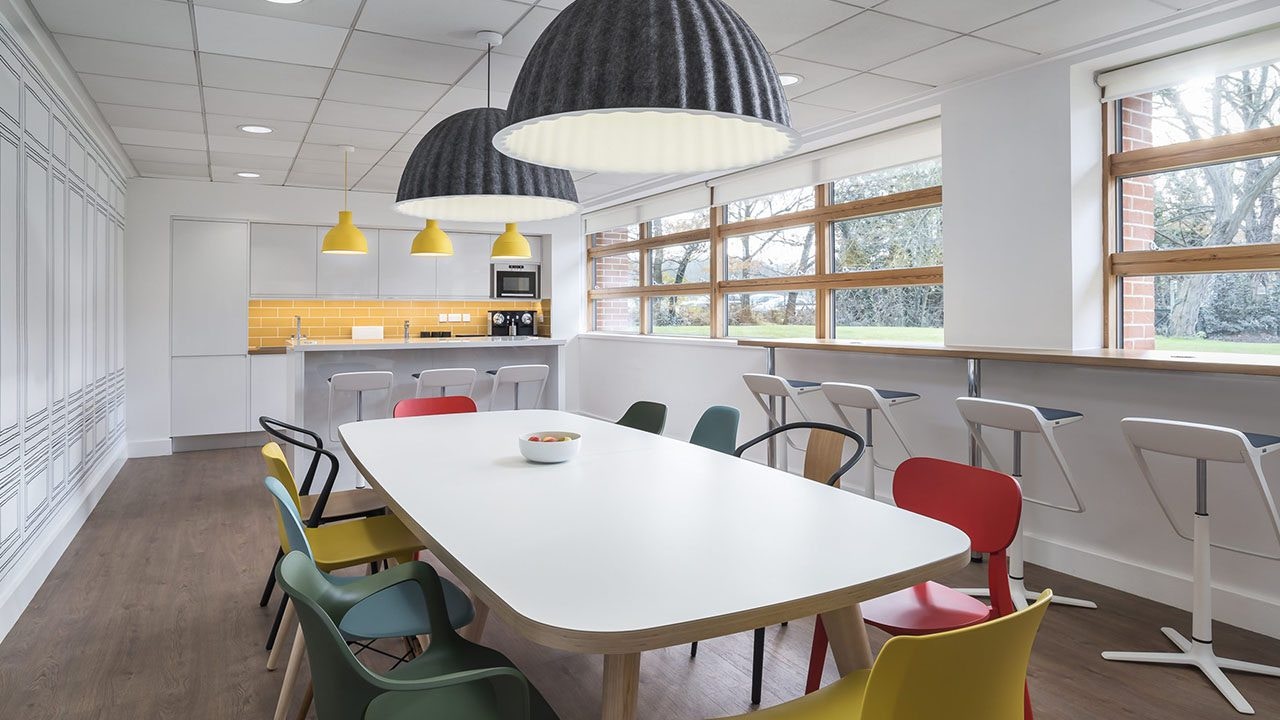
How to Create an Agile Office
Creating an agile office is a dynamic process that requires careful planning and execution. It involves designing a workspace that is versatile, and adaptable and promotes flexibility while maximising space utilisation. Here are some essential steps to follow when creating an agile office fit-out:
Step 1: Define Your Goals
Before embarking on an agile office fit-out project, it’s essential to define your goals. What are you trying to achieve with the new office design? Do you want to increase collaboration, productivity, or efficiency? Defining your goals will help you to establish a clear vision and ensure that your design meets your specific needs.
Step 2: Understand Your Space
To create an agile office fit-out, it’s essential to have a good understanding of your workspace – assessing the current office layout, identifying areas that are under-utilised, and determining which spaces could benefit from redesign or repurposing. A fit-out company can help you assess your current workspace, leveraging its expertise to identify areas that are under-utilised and suggesting redesign or repurposing options. At K2 Space, our fit out team create designs to ensure that your office layout is optimised for productivity and functionality.
Step 3: Plan Your Layout
Once you have a good understanding of your space, it’s time to plan your layout. Using mood boards, space plans and 3D renders, we can help you plan an office layout to promote agility, flexibility, and collaboration, as well as suggest design strategies and solutions. Our office furniture consultancy team can also help in recommending to you various types of multi-functional and modular furniture that can be easily reconfigured to adapt to the changing needs of your business.
Step 4: Incorporate Technology
To promote agility and flexibility, it’s essential to incorporate technology into your office design. Consider installing wireless charging stations, integrating video conferencing capabilities, and implementing smart lighting solutions to create a modern, efficient workspace. Again we can assist you in selecting and integrating technology solutions that will enhance your office design, such as wireless charging stations, video conferencing capabilities, and smart lighting solutions.
Step 5: Focus on Comfort and Wellness
An agile office fit-out should also prioritise the comfort and wellness of employees. Incorporate ergonomic furniture, natural lighting, and plants to promote a healthy, comfortable work environment.
Step 6: Regular Assessment
Finally, it’s essential to test and refine your agile office fit-out continually – adapting to change where needed. Monitor employee feedback, assess productivity levels, and make adjustments as needed to ensure that your design meets your goals.
FAQs on Agile Workplaces
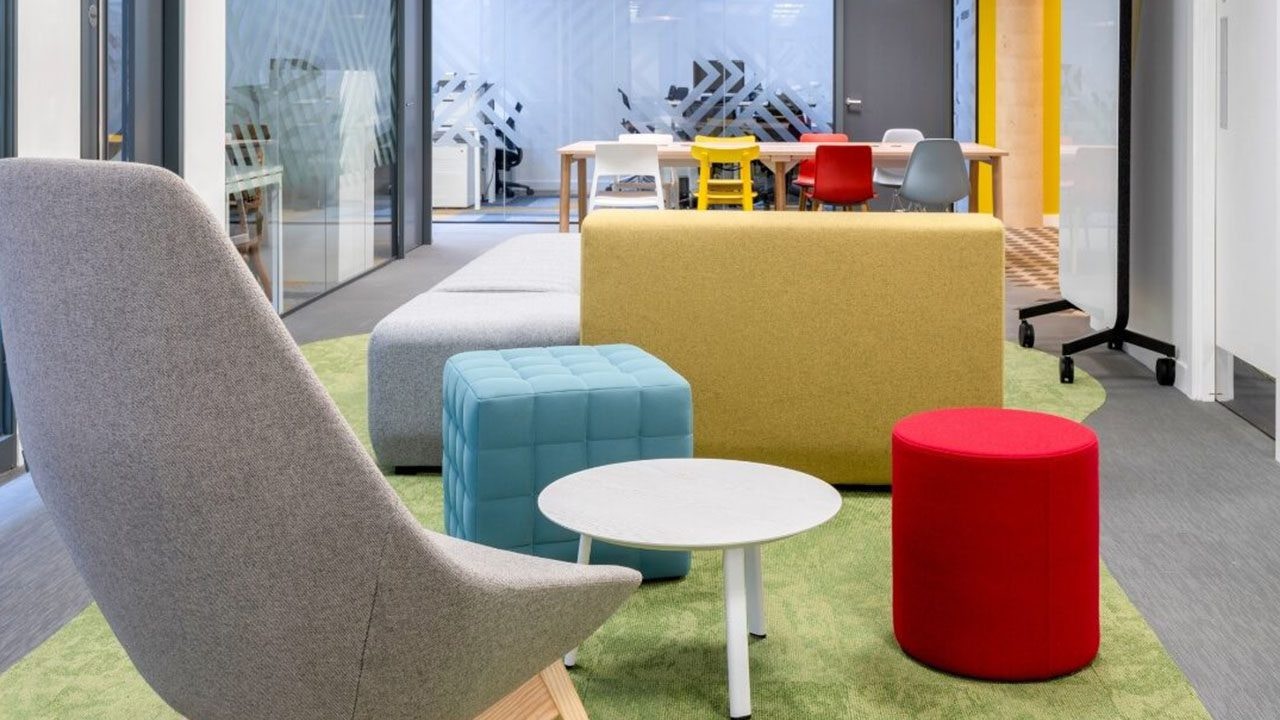
Q: WHAT IS AN AGILE OFFICE FIT OUT?
An agile office fit out is a workspace design that supports agile working practices. This can include flexible workstations, collaborative spaces, and technology that enables employees to work from anywhere.
Q: WHY IS AN AGILE OFFICE FIT OUT IMPORTANT?
An agile office fit-out is important because it can lead to a more engaged, productive, and satisfied workforce. By creating a workspace that supports agile working practices, companies can foster greater collaboration, flexibility, and innovation.
Q: HOW CAN I INVOLVE EMPLOYEES IN THE OFFICE FIT OUT PROCESS?
Involving employees in the office fit out process can help ensure that the workspace design meets their needs and preferences. This can include soliciting feedback on work preferences, providing opportunities for customisation, and creating collaborative spaces that encourage teamwork.
Q: HOW CAN I ENSURE THAT MY OFFICE FIT OUT IS FLEXIBLE?
To ensure that your office fit out is flexible, you can design spaces that can be easily reconfigured to suit different work styles and changing business needs. This can include movable furniture, modular workstations, and flexible meeting spaces that can be easily adapted to different group sizes and purposes.
Q: HOW CAN I PRIORITISE EMPLOYEE WELL-BEING IN MY OFFICE FIT OUT?
To prioritise employee well-being in your office fit out, you can provide ergonomic furniture, ample natural light, and spaces for relaxation and socialising. By creating a workspace that supports employee well-being, you can improve productivity, reduce absenteeism, and increase overall job satisfaction.
Further Reading
- Parker, S. K., & Omodei, M. M. (2021). Agile working and employee well-being during the COVID-19 pandemic. Human Relations, 00187267211030101. doi: https://doi.org/10.1177/00187267211030101
- British Council. (n.d.). Agile working. LearnEnglish. https://learnenglish.britishcouncil.org/business-english/business-magazine/agile-working
- Knight Frank. (n.d.). What is agile working? Insights. https://www.knightfrank.co.uk/office-space/insights/culture-and-space/what-is-agile-working/
- Agile Business Consortium. (n.d.). What is agile working? https://agile.org.uk/what-is-agile-working/
- Halkin. (2019, May 21). What is agile working? Halkin. https://www.halkin.com/post/what-is-agile-working